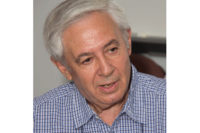This is a tool that can greatly improve communicating the specifications for producing and qualifying parts that are produced by casting, forging or molding. Parts produced by any process do not have prefect form, prefect form does not exist. Castings, Forgings and Molded parts by nature are very non-uniform and special considerations must be made when specifying their requirements, such as process allowances and dimensioning and tolerancing. So what is unique about parts produced from these processes? They can be considered a glob of material. Surfaces are not flat and have many imperfections, holes are not round; they have draft, sinks, voids and many other problems, most surfaces perpendicular to the mold parting plane have draft, in other words tapered, edges at parting lines have various unconventional conditions created from finishing operations, thus proper descriptions can be challenging.
The ASME standard Y14.8 covers definitions of terms and features unique to casting, forging and molded part technologies with recommendations for their uniform specification on engineering drawings and related documents. The American Society of Mechanical Engineers (ASME) was founded in 1880 and has more than 120,000 members in more than 150 countries worldwide. They are best known for setting codes and standards for mechanical devices. This standard was first published in 1989 and has been revised to the current 2009 revision. When drawings are based on this standard, the methods of dimensioning and tolerancing shall be in accordance with ASME Y14.5 and this standard. The Y14.5 standard is the most widely accepted standard of geometric tolerancing and dimensioning for mechanical devices. These standards have been approved by the American National Standards Institute and adopted by the Department of Defense, aircraft industry, automotive industry, heavy construction equipment, agriculture equipment and many other commercial enterprises.
Some of the topics covered in the Y14.8 standard are definitions, drawing presentation, drawing requirements, specifying allowable draft angles, parting lines, datum referencing, drawing notations and sample drawings.
Standardization is very important to clearly and efficiently communicate requirements and this document can be a powerful tool to accomplish this.
The ASME Y14.8 standard is available from the American Society of Mechanical Engineers. ASME.org
John A. Rivers started his career at Tool Products Company in Minneapolis, MN. The first ten years of his career were spent with hands on experience designing and building tooling. The next fifteen years process engineering and providing customer support. At that time, Tool Products was a large custom aluminum die-casting supplier. He has been active in the North American Die-Casting Association, The American Mold Builders association and is a charter member of ASME standard committee Y14.8 that was formed in 1986.




